#Dry Season in Tanzania
Explore tagged Tumblr posts
Text
Best Time to Visit Tanzania: Choosing Between Dry and Rainy Seasons
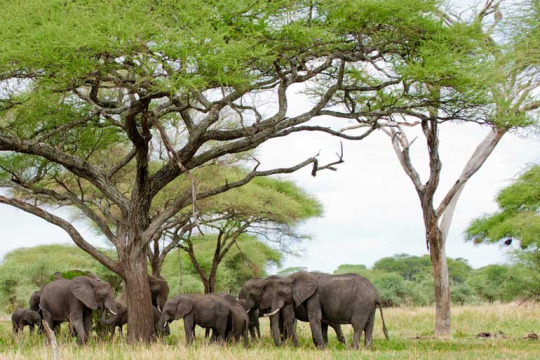
The Best Time To Visit Tanzania is during the long dry season, spanning from July to September. These months offer excellent weather conditions for various activities such as safaris, witnessing the Great Migration, and enjoying beach holidays in Zanzibar.
The Dry Season in Tanzania ensures clear skies, minimal rainfall, and comfortable temperatures, creating ideal conditions for outdoor adventures. However, it’s essential to note that these months coincide with peak travel season, resulting in higher rates and increased tourist traffic at popular destinations.
For travellers seeking a quieter Tanzania safari experience and lower rates, the short rainy season from the end of October to December can be an excellent alternative. During this period, the landscapes are lush and green following the rains, and wildlife sightings can still be rewarding. Although there may be occasional showers, they are typically brief and do not significantly impact travel plans.
In conclusion, whether you prefer the bustling atmosphere of the dry season or the quieter ambiance of the short rainy season, Tanzania Safari Tour offers unforgettable experiences year-round.
0 notes
Text
Dandelion News - November 22-28
Like these weekly compilations? Tip me at $kaybarr1735 or check out my Dandelion Doodles!
1. Los Angeles becomes a sanctuary city for LGBTQ+ youth and immigrants as officials reject Project 2025

“The Los Angeles City Council voted unanimously Tuesday to pass the “sanctuary city” ordinance, shielding queer youth who travel to the city to receive gender-affirming care from prosecution, as well as preventing city resources from being used in immigration enforcement[….]”
2. Huge deforested areas in the tropics could regenerate naturally, study finds

“Cleared or degraded tropical forests around the world covering a combined area larger than Saudi Arabia could regrow on its own, according to new research published Oct. 30 in the journal Nature. [… T]he permanence of regrown forests is critically important to the benefits it can provide to biodiversity and the climate.”
3. Minnesota tribe could soon get a solar-powered resilience hub

“A pair of developers are working to build a microgrid at an elementary school and community center on the White Earth Reservation in northern Minnesota [… which would] provide about 12 hours worth of backup power for residents to be able to charge cell phones, power medical equipment, or stay warm in the event of a power outage.”
4. An exchange between Indonesia and Tanzania supports food security and ocean health

“Around the world, WWF helps manage […] both traditional sustainability-oriented management and science-based practices. This combination supports long-term food security and biodiversity goals. […] Local ownership and management are […] key to achieving stable fisheries and social and economic benefits.”
5. Spiky blue devils and chocolate lilies: Victorian grassland bursts with wildflowers after ecological ‘reset’

“About 70 native plant species could be found within the site, including […] four endangered species of orchid. […] Careful management, including an ecological burn in May and weed control measures to reduce pasture grasses, laid the groundwork for wildflowers to thrive.”
6. Vast forests, wetlands and lakes conserved [in Ontario]

“A vast 970-hectare area featuring thriving forests, wetlands and crystal-clear lakes northeast of Sault Ste. Marie is now protected[….] The intact forests, lakes, wetlands and shorelines support high biodiversity and are home to many threatened species[….]”
7. A New Era of Compassion: How Suncoast Humane Society is Changing Animal Welfare for Good
“Our campus includes outdoor play areas, trails, and even a small swimming pool to encourage animals to stay active, explore, and simply be themselves.”
8. Building climate resilient cocoa farming in West Africa
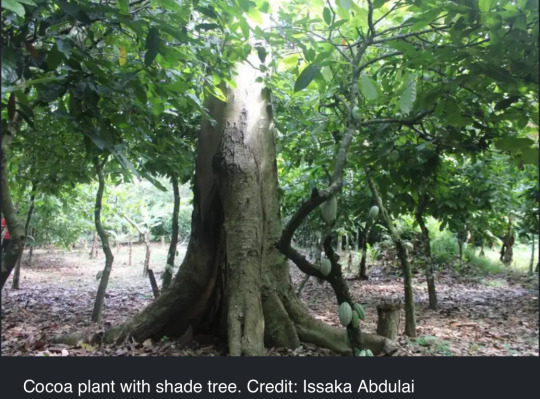
“[… A] promising new approach to improve climate resilience in cocoa agroforestry across West Africa […] focuses on the critical role of leaf "phenology"—the seasonal changes in leaf cycles—in trees providing shade in managing climate impacts. [… S]hade trees that lose their leaves entirely during the dry season proved especially beneficial in maintaining soil moisture[….]”
9. New Zealanders save more than 30 stranded whales by lifting them on sheets

“[The Department of Conservation] praised as “incredible” the efforts made by hundreds of people to help save the foundering pod. “It’s amazing to witness the genuine care and compassion people have shown toward these magnificent animals[….]””
10. 'A really sobering moment:' English zoo fights extinction of freshwater Boxer pupfish

“Whipsnade Zoo aquarists were recently told by conservation partners that that the world's last remaining Boxer pupfish was in their care, prompting the zoo to carry out the immediate transport of all the "precious" Boxer pupfish eggs to another local conservation and education charity in the name of species preservation.”
November 15-21 news here | (all credit for images and written material can be found at the source linked; I don’t claim credit for anything but curating.)
#hopepunk#good news#los angeles#us politics#lgbt+#immigrants#deforestation#nature#minnesota#native american#indigenous#electricity#solar panels#solar energy#solar power#ocean#fishing#food insecurity#wildflowers#native wildflowers#native plants#conservation#canada#animal shelters#humane society#agroforestry#new zealand#whale#fish#endangered
127 notes
·
View notes
Text


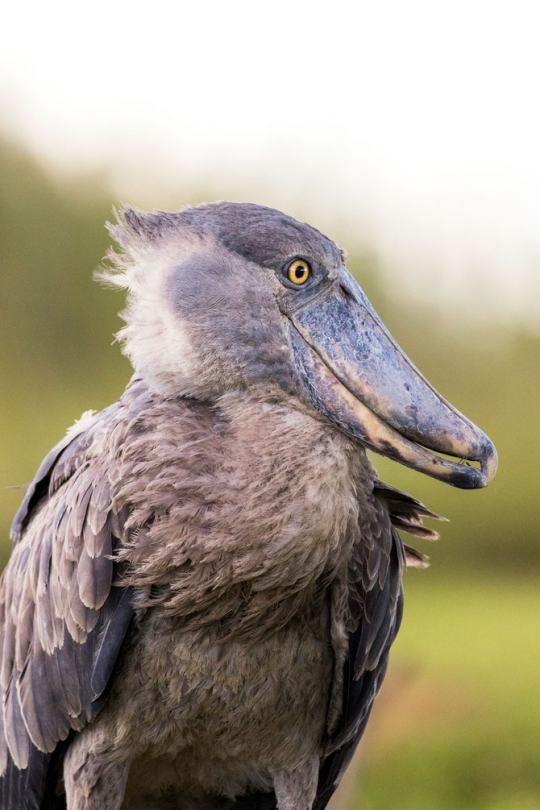
A Shoo-in Shoebill Stork
The shoebill stork, also known as the whalebill stork or Balaeniceps rex is in fact not a stork at all, but a long-legged wading bird belonging to the family Pelecaniformes. This species can be found in the central African tropics, from southern Sudan to northern Tanzania. Within this range, they mainly inhabit freshwater swamps and dense marshes, particularly those with deep water large reed beds.
Balaeniceps rex is often referred to as a dinosaur among birds due to its fearsome appearance. The average individual stands 1.1-1.4 m (3.6-4.5 ft) tall and has a wingspan of 2.3 to 2.6 m (7.5 to 8.5 in). However, adults are quite light, weighing only 4 to 7 kg (8.8 to 15.4 lb). Males tend to be larger than females, but otherwise the two sexes look identical. Adults have dark grey plumage with a lighter belly and darker wings. Their most striking feature is their beak, which is extremely large and can be said to resemble a wooden show (hence the name).
The shoebill's beak is very useful for catching its primary prey: fish. B. rex consumes a variety of species, including lungfish, catfish, and tilapia, as well as non-fish items like water snakes, frogs, turtles, mollusks, and even young crocodiles. Shoebills typically stalk their prey, or stand perfectly still and wait for their prey to come to them, before quickly snatching it up and decapitating it with the sharp edges of their beaks. Because of their large size and strong bills, adults are seldom prey for other animals, and they defend their nests fiercely from predators like snakes and other birds.
Outside of the breeding season-- and even during it-- shoebills are extremely territorial. Not only do they chase potential predators away from their nests, both males and females will fiercely defend their territory from other shoebills.
Breeding begins in the dry season, typically in in May, and lasts until about October. Once a male and female form a pair, they remain together for the duration of the mating season. They build a nest from floating vegetation, and 1-3 eggs are cared for by both parents; in addition to being incubated for warmth, one parent may also occasionally pour a beak-full of water over the eggs to keep them cool during the hot summer day. The eggs hatch about 30 days after being laid, and young are fed continuously-- though usually only one chick survives to adulthood. At 125 days old they become fully independent and leave to establish their own territories. The average individual can live up to 35 years in the wild.
Conservation status: The IUCN lists the whalebill stork as Vulnerable. Current wild population estimates sit at about 5,000-8,000 individuals. Primary threats include poaching for the zoo trade and consumption, habitat destruction, and pollution.
If you like what I do, consider leaving a tip or buying me a kofi!
Photos
Santiago Caballero Carrera
George Amato
Mana Meadows
#shoebill stork#Pelecaniformes#Balaenicipitidae#wading birds#birds#wetlands#wetland birds#freshwater fauna#freshwater birds#africa#central africa#animal facts#biology#zoology#ecology
169 notes
·
View notes
Text

November 23, 2023 - Swynnerton's Robin (Swynnertonia swynnertoni) Found in parts of Mozambique, Zimbabwe, and Tanzania, these chats live in mountain forests, often near streams. They eat mostly insects and other invertebrates, foraging on the ground or dropping onto their prey from a low perch. Breeding during the rainy season, females do most of the nest construction, building open cups from rootlets, dry and skeletonized leaves, moss, tree fern fibers, and stems in trees and shrubs. They lay clutches of two, or sometimes three, eggs, incubating them and brooding the chicks. Males provide some help feeding the chicks. They are classified as Vulnerable by the IUCN due to habitat loss and degradation in their small and fragmented range.
#swynnerton's robin#old world flycatcher#swynnertonia swynnertoni#bird#birds#illustration#art#woodland#birblr art
63 notes
·
View notes
Text
Discover Gombe Stream National Park - A Paradise for Primate Enthusiasts

If you’re passionate about primates, Gombe Stream National Park in Tanzania is an unparalleled destination to witness the marvels of the animal kingdom. Nestled along the shores of Lake Tanganyika, this park offers a rare and close-up experience to observe wild chimpanzees in their natural environment.
What sets Gombe Stream apart from other national parks is its captivating mix of dense forests, rugged hills, and crystal-clear waters, making it an ideal spot for wildlife enthusiasts and adventure seekers alike. Let’s explore what makes Gombe Stream National Park a must-see attraction in Tanzania.
Gombe’s Famous Primates: Chimpanzees, Baboons, and Monkeys
One of the main attractions in Gombe Stream National Park in Tanzania is undoubtedly its famous chimpanzees. Gombe is home to a large population of these intelligent creatures, made even more famous by the pioneering work of Dr. Jane Goodall in the 1960s. The park offers a rare opportunity to observe chimpanzee behaviour up close, where visitors can watch the chimpanzees socializing, foraging, or resting in their natural environment.
In addition to chimpanzees, Gombe National Park Tanzania is also home to a variety of other primates, including baboons, red-tailed monkeys, and colobus monkeys. These primates add to the vibrant wildlife and make for a dynamic experience on your visit. For those interested in bird watching, the park also boasts over 200 bird species, including the beautiful white-cheeked turaco.
Best Time to Visit Gombe Stream National Park
The Best Time to Visit Gombe Stream National Park is during the dry season, which runs from June to October. During this time, wildlife, especially chimpanzees, is more likely to be found closer to the park’s water sources, making them easier to spot. The weather is also more favourable for trekking and exploring, as trails are less slippery, and the heat is more manageable.
The rainy season (from November to May) tends to make trekking more challenging, as the trails become muddy, and the forest can be difficult to navigate. However, this is also a great time for bird watching, as migratory species are more active, and the landscape is lush and green.
Things to Do in Gombe Stream National Park
Explore the wonders of Gombe Stream National Park Safari, famous for its chimpanzee trekking, scenic hiking trails, and breathtaking views of Lake Tanganyika. Experience wildlife, nature, and adventure in one unforgettable destination.
Gombe Stream National Park Tanzania is famed for its wild chimpanzees and Jane Goodall’s groundbreaking research. Visitors can enjoy chimpanzee trekking, forest hikes, birdwatching, and boat safaris along Lake Tanganyika, all while soaking in the park’s lush landscapes and diverse wildlife.
Chimpanzee Trekking: The highlight of any visit to Gombe Stream is the opportunity to trek through the forest in search of the chimpanzees. Guided treks are led by expert rangers, who will take you to areas where these intelligent creatures are most commonly seen.
Bird Watching: With over 200 species, including the rare white-cheeked turaco, Gombe Stream is a haven for bird watchers.
Hiking and Nature Walks: Explore the forest trails and hills with a nature walk, offering stunning views of Lake Tanganyika. The hike to Jane Goodall’s viewpoint is particularly popular for its panoramic views.
Plan Your Gombe Stream Adventure with Us
If you’re ready to explore one of Tanzania’s hidden gems, Gombe Stream National Park offers a once-in-a-lifetime opportunity to connect with nature and observe primates in their natural habitat. Whether you’re planning a for Safari, or a special trip dedicated to chimpanzee trekking, Gombe Stream and the Tanzania Destinations provides a fascinating addition to your itinerary.
Book your safari today with Halisia Afrika and experience the magic of Gombe Stream National Park Tanzania with expert guides, customized itineraries, and unforgettable experiences. Let us guide you on a journey of discovery and adventure in one of the world’s most unique primate havens.
Want to know more details, visit this blog @ https://halisiaafrica.com/blog/exploring-gombe-stream-national-park-a-primate-lovers-paradise/
5 notes
·
View notes
Text

Elephants in Maasai Mara, Kenya. The elephant corridor in Maasai Mara runs between Kenya and Tanzania. Throughout the year, herds of elephants move along the pathway in search of food, water and safety. During dry seasons, when water and food become scarce in certain areas, the corridor becomes especially crowded as herds embark on long journeys in search of sustenance. The path is treacherous, with the threat of poachers and the challenges of human-wildlife conflicts. Maasai Mara’s rangers protect the elephants and are the unsung heroes of conservation
Photograph: Anadolu Agency/Getty Images
#anadolu agency#photographer#getty images#elephants#animal#mammal#wildlife#maasai mara#kenya#tanzania#nature
15 notes
·
View notes
Text
Three Incredible African Safari Destinations

Africa is a famous vacation spot, with millions of tourists visiting the continent yearly to go on safari, a word in Swahili meaning trip. Visitors who go on safari have the opportunity to see a wide variety of wild animals in their natural habitat. Among the many safari destinations, Kenya, Tanzania, and South Africa are considered to be the best places to experience the beauty and splendor of the African wilderness.
For good reason, Kenya has long been regarded as the birthplace of the safari. It is home to the world-renowned Maasai Mara National Reserve, which gives tourists the chance to see the "Big Five" (elephant, buffalo, rhinoceros, lion, and leopard) and other wildlife including giraffes, hippos, and hyenas in one location. The Mara's diverse topography, from expansive savannahs to green riverine forests, provides the perfect backdrop for wildlife observation and photography.
The best time to go on safari in Kenya is during the dry season, which runs from July to October. This is when the spectacular Great Migration takes place, with over 1.5 million zebras, gazelles, and wildebeest moving from Tanzania's Serengeti National Park to Kenya's Maasai Mara in search of greener pasture. To reach the Maasai Mara during the Great Migration—which is recognized as one of the world's new wonders—the animals have to swim across the Mara River, which is packed with crocodiles, and sadly, many of them do not make it through the crossing. Predators such as lions, cheetahs, and leopards that lurk in the Maasai Mara still pose a threat to those animals that survive the Mara River crossing. Every year, thousands of visitors travel to Kenya and its neighbor Tanzania to witness the Great Migration.
Between July and October, travelers to Tanzania can also be a part of the Great Migration at the popular Serengeti National Park, which rivals Kenya's Maasai Mara in terms of natural beauty and wildlife. Tanzania is also home to the Ngorongoro Crater, a UNESCO World Heritage that hosts thousands of wild animals, including a large population of lions, elephants, wildebeest, and rhinos, making it one of the most densely populated wildlife areas in the world.
Another must-see destination in Tanzania is Mount Kilimanjaro, Africa's tallest peak. While not a traditional safari location, the iconic mountain adds to Tanzania's allure, offering opportunities for trekking and stunning panoramic views of the surrounding landscapes. Travelers interested in a more cultural experience can also interact with the Maasai people, a nomadic tribe living in Tanzania and Kenya who have rich traditions and a strong bond with the land and wildlife.
In South Africa, a well-liked safari attraction is Kruger National Park. This park is one of Africa's largest wildlife sanctuaries, spanning around 20,000 square kilometers. More than 500 bird species and 147 mammal species call it home, and many of the Big Five animals can also be spotted by visitors at Kruger National Park. The ideal time to go on safari at Kruger is also during South Africa's dry season, from April to October. At this time, animals congregate around waterholes and are easier to find because of the scant vegetation.
South Africa provides opportunities to visit wineries, seaside towns, and historical places like Nelson Mandela's jail cell at Robben Island, Cape Town, for people who want to mix a safari with other pursuits.
5 notes
·
View notes
Text
Manyara Ranch: African Wildlife Foundation
Good story from the African Wildlife Federation. Tap/click on the caption to get to the PDF version of the report.

Excerpt:
A long time ago, the people of Tanzania and their livestock adopted to living alongside wildlife. For millennia, the Maasai have tracked the movements of wildebeests to identify good grazing; the favorite hideouts of lions to avoid attacks on cattle; and the presence of oxpeckers to know if dangerous buffalo are nearby.
In the past 60 years, however, drastic changes have come to the Maasai Steppe, a large semi-arid grassland ecosystem in north-central Tanzania. Large-scale farms, the expansion of safari tourism, the creation of national parks, and restricted access to once communally used land have squeezed the rangeland available to livestock. With more cattle on less land, grasslands are becoming overgrazed. The spread of human settlements and agriculture have blocked age-old wildlife migration routes, leading to more frequent—and sometimes deadly—confrontations between people and animals. And climate change, which has intensified droughts and upended rainfall patterns, is escalating competition for green grass and fresh water, pushing even more pastoralists to agriculture.
Anchoring the Maasai Steppe are Tarangire and Lake Manyara National Parks, where the shores of the eponymous river and lake abound with wildlife in the dry season. The steppe is home to some of the world’s most abundant and diverse wildlife, including one of the largest—and growing– populations of elephants in Africa (recovering from heavy poaching in the 1970s and 1980s) and the only stronghold of the eastern white-bearded wildebeests. The ability to move between the parks and beyond them into the plains is crucial for the survival of many of the ecosystem’s most iconic species, including elephants and wildebeests. But safe, unimpeded pathways are becoming scarce. In between the two parks, in the all-important Kwakuchinja wildlife corridor, sits a patchwork of villages, farms, large herds of livestock, grasslands—and Manyara Ranch.
Since 2001, the African Wildlife Foundation (AWF) has championed a unique conservation model for the ranch, starting with negotiations with the government to form a land conservation trust to make the ranch a conservation space. Beginning in 2013, we took over direct management of the ranch, balancing the working cattle ranch with habitat restoration and wildlife conservation—a new model for Tanzania.While Tanzania’s pastoralists generally are prohibited from bringing livestock into national parks, cattle are a nonnegotiable part of the region’s economy and culture. Therefore, successful conservation of land outside formal protected areas depends on the sustainable coexistence of livestock and wildlife, particularly along migration routes where wildlife move outside of the boundaries of the parks. Manyara Ranch is a vital link along one of those migration routes. It helps connect the national parks to each other and to the wet-season grazing grounds of the Northern Plains, described as the “last, best remaining breeding ground” for the ecosystem’s migrating wildebeest, zebras, gazelles, and others. In addition to the migrating animals that seasonally pass through, the ranch today is home to resident giraffes, lions, and many other iconic African species—as well as more than a thousand cattle.
The lease to the land is now held by the Monduli District Council, and the day-to-day running of the ranch is managed by the Manyara Ranch Management Trust, composed of representatives from the Monduli council, two local villages, the Tanzania Wildlife Management Authority, and AWF.
“The vision for a project like this is to bring management expertise to the local stakeholders. We want to think inclusively and really focus on creating local partnership in decision-making regarding operations,” said Pastor Magingi, AWF’s Tanzania Country Coordinator.
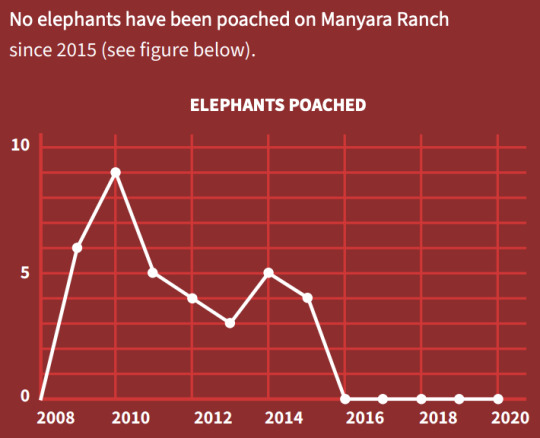

3 notes
·
View notes
Text
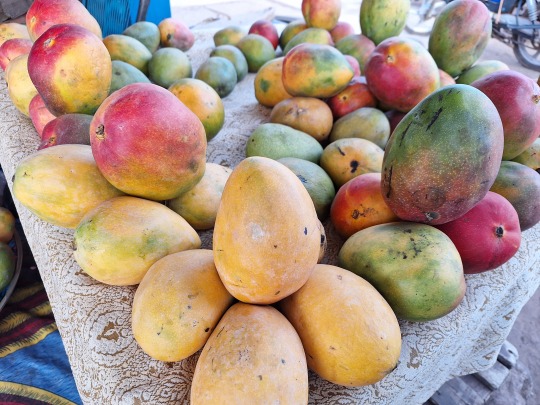
Unlocking the Export Potential of Fresh Fruits from West and East Africa: A Comprehensive Guide for Agricultural Cooperatives
October 14, 2024
West and East Africa’s fertile and diverse landscapes offer ideal conditions for producing a wide range of fresh fruits with immense export potential. By capitalizing on this agricultural strength, cooperatives in these regions have the chance to access lucrative global markets, fostering economic growth, sustainable development, and greater prosperity for their communities. To make this vision a reality, understanding the export landscape, ensuring consistent production, and building a value chain that prioritizes quality and reliability are crucial.
Fresh Fruits with High Export Potential
West Africa:
1. Mangoes (April to September)
Countries: Mali, Senegal, Ivory Coast, Ghana, Burkina Faso
Varieties: Kent, Keitt, Tommy Atkins, Amélie
2. Pineapples (Year-round, peaks in December-April & June-August)
Countries: Ivory Coast, Ghana, Benin
Varieties: Smooth Cayenne, MD2 (Golden)
3. Bananas and Plantains (Year-round)
Countries: Ivory Coast, Ghana, Nigeria, Cameroon
Varieties: Cavendish, Red bananas, French plantain
4. Papayas (Year-round)
Countries: Nigeria, Ivory Coast, Ghana
Varieties: Red Lady, Solo
5. Citrus Fruits (October to April)
Countries: Senegal, Nigeria, Ghana
Varieties: Valencia, Washington Navel, Tahiti lime
East Africa:
1. Avocados (March-September for Hass, October-March for Fuerte)
Countries: Kenya, Tanzania, Uganda, Ethiopia
Varieties: Hass, Fuerte
2. Passion Fruits (Year-round, peaks March-August)
Countries: Kenya, Uganda, Rwanda
Varieties: Purple, Yellow
3. Pineapples (Year-round, peaks in December-April)
Countries: Kenya, Uganda
Varieties: Smooth Cayenne, MD2
4. Mangoes (November-April)
Countries: Kenya, Tanzania, Uganda
Varieties: Apple Mango, Ngowe, Kent
5. Bananas (Year-round)
Countries: Uganda, Tanzania, Rwanda
Varieties: Cavendish, East African Highland bananas (Matoke)
6. Papayas (Year-round)
Countries: Kenya, Tanzania
Varieties: Solo, Sunrise
Strategies for Ensuring Year-Round Supply
To build a sustainable fresh fruit export business, strategic planning and innovation are essential. Cooperatives should focus on the following:
1. Crop Diversification and Planting Cycles
Selecting early, mid, and late-season fruit varieties can extend harvest periods, ensuring consistent supply.
Staggered planting schedules provide continuous production, reducing supply gaps.
2. Modern Agricultural Practices
Efficient irrigation systems like drip and sprinkler systems help maintain yields even during dry spells.
Regular soil health assessments and the use of organic fertilizers support optimal crop growth.
3. Investments in Post-Harvest Handling and Storage
Cold chain infrastructure is critical for preserving freshness and quality from farm to market.
Advanced packaging protects fruits during transportation by air cargo, enhancing visual appeal and market value.
Building a Reliable and Quality-Oriented Value Chain
To succeed internationally, cooperatives need a value chain that is transparent, reliable, and focused on delivering high-quality products. Key elements include:
1. Certification and Quality Standards
Organic certification and GlobalGAP compliance open access to high-demand markets.
2. Strong Partnerships and Contract Farming
Long-term partnerships with buyers and suppliers ensure market stability and predictable pricing.
3. Leveraging Technology
Real-time monitoring of crops and e-commerce platforms facilitates efficient supply chain management and direct market access.
4. Capacity Building and Farmer Training
Continuous training in modern farming techniques improves yield and product quality.
5. Ensuring Traceability and Transparency
Traceability systems and transparent operations enhance trust with buyers, fostering long-term relationships.
Recommendations for Enhancing Quality and Reliability
1. Quality Control Measures
Strict quality checks throughout the supply chain ensure that only top-grade fruits are exported, minimizing rejection rates.
2. Supply Chain Reliability
Contingency plans for disruptions and long-term logistics contracts ensure timely delivery to export markets.
3. Sustainable Practices
Eco-friendly farming techniques like crop rotation and organic compost usage improve soil health and sustainability.
Conclusion
The potential for fresh fruit exports from West and East Africa is vast, with the capacity to transform lives and communities. By focusing on quality, sustainability, and building a reliable value chain, cooperatives can thrive in global markets. Investing in organic certification, modern agricultural methods, and transparent supply chain management will set African fresh fruits apart on the world stage. Now is the time to harness Africa’s agricultural potential and position it as a global leader in fresh fruit exports.
I hope you enjoyed reading this post and learned something new and useful from it. If you did, please share it with your friends and colleagues who might be interested in Agriculture and Agribusiness.
Mr. Kosona Chriv
Group Chief Sales and Marketing Officer
Solina / Sahel Agri-Sol Group
SOLINA GROUPE CÔTE D’IVOIRE
Cocody, Riviera Bonoumin
Lot 738 Ilot 56 Section ZT parcelle 67
11 BP 1085 Abidjan 11
Ivory Coast
WhatsApp/Telegram global marketing and sales : +223 90 99 1099
Email: [email protected]
Web sites
English https://sahelagrisol.com/en
Français https://sahelagrisol.com/fr
Español https://sahelagrisol.com/es
Deutsch https://sahelagrisol.com/de
Italiano https://sahelagrisol.com/it
Português brasileiro https://sahelagrisol.com/pt
简体中文 https://sahelagrisol.com/zh
عربي https://sahelagrisol.com/ar
हिन्दी https://sahelagrisol.com/hi
தமிழ் https://sahelagrisol.com/ta
Social media
BlueSky @sahelagrisol.bsky.social https://bsky.app/profile/sahelagrisol.bsky.social
Facebook https://www.facebook.com/sahelAgri-Sol
LinkedIn https://www.linkedin.com/company/sahel-agri-sol
YouTube https://www.youtube.com/channel/UCj40AYlzgTjvc27Q7h5gxcA
Sahel Agri-Sol, an agribusiness group headquartered in Abidjan, Ivory Coast, with operations spanning West and East Africa, is committed to bringing the finest agricultural products from the Sahel and surrounding regions to the global marketplace.
Our mission is rooted in promoting inclusive economic growth, fostering sustainable development for farming communities, and preserving their cultural and environmental heritage.
By partnering closely with agricultural cooperatives and local producers across the Sahel, West, and East Africa, we guarantee fair compensation for their premium crops, driving prosperity and resilience in rural areas.
Photo: Fresh mangoes on display at a bustling market in Mali (credit: Sahel Agri-Sol / Public Domain)
#AfricanAgriculture #FreshFruitExports #SustainableFarming #OrganicCertification #GlobalTrade #WestAfrica #EastAfrica #MangoExports #AvocadoExports #PineappleFarming #ColdChain #SupplyChainOptimization #FarmerEmpowerment #Agribusiness #AgricultureInnovation
2 notes
·
View notes
Text

Vanilla roscheri 🏵🌱 is a species of flowering plant in the family Orchidaceous found in Kenya, Tanzania, Ethiopia, and South Africa. It is a climber and grows primarily in the seasonally dry tropical biome.
6 notes
·
View notes
Text
how to prepare for the climb
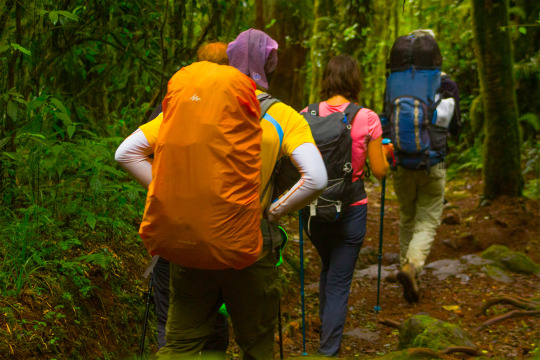
First of all I want to make clear that we are talking about a pretty high mountain. As you know the weather in the mountains is very hard to predict and can often change very quick. In fact the temperature on the summit of Kili is usually below freezing, which means that you can face temperatures of -20°C on Uhuru Peak while having about +30°C down in Moshi. No matter which time of the year: you should always come well prepared. There are different seasons in Tanzania but not like the winter & summer season as we know it from Europe or North America. Due to its proximity to the Equator the year is divided into wet and dry season. Therefore the best time to climb Kilimanjaro is during the dry season between August and October as rainfall during that time is at its lowest and you have the highest chance of having clear views to and from the mountain. On the flip side said months are also the high season on the mountain which means it is also the busiest time of the year (by choosing a longer, less popular route it'll be more relaxed!).
2 notes
·
View notes
Text
A Guide to Enjoy Exciting East African Safaris
Do you love watching African wildlife on Discovery or National Geographic Channel? How about seeing the wild animals from close on East African safaris? East Africa has the best safari destinations, like Tanzania and Kenya are worth visiting and exploring. See the world’s iconic wildlife and natural wonders on an East African safari. East Africa is home to the world-famous Serengeti National Park, Mount Kilimanjaro, the Maasai Mara Game Reserve, and the Ngorongoro.
Here is a guide that can help you make your African Safari a once-in-a-lifetime trip!
Which Destinations to Explore on an East Africa Safari?
East Africa has abundant wildlife and stunning wildernesses. Destinations like Tanzania and Kenya possess unique wonders.
The Great Migration Event in Tanzania and Kenya
Tanzania’s vast Serengeti and Kenya’s Mara ecosystems are vital for the annual wildebeest migration. Wildebeest Migration is the biggest show in the world, where millions of mammals migrate in a cycle in search of fresh grass and water.
Wildebeest migration helps you see the fight for survival for the animals in the wild.
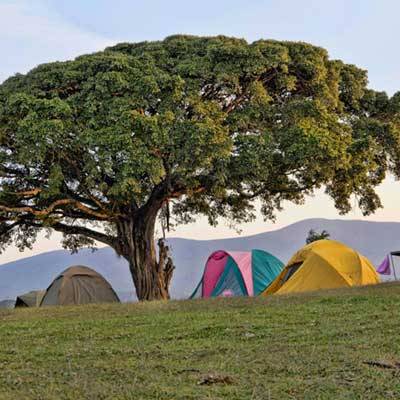
Visit Tanzania’s Serengeti or Kenya’s Masai Mara to see diverse wildlife and a varied ecosystem.
Tanzania’s Ngorongoro Crater
The Ngorongoro Crater plays host to incredible wildlife. The unique place is the largest unbroken caldera with fertile plains. You can see the African Big Five at the Ngorongoro Crater and many bird species.
When is the Time for an East African Safari?
When to go East Africa depends on what kind of safari experience you want! The northern circuit of Tanzania and Kenya has two rainy seasons. The best time to visit Tanzania or Kenya's north circuit is from July to October, November to December, and March to May. However, traveling during the off-season has some advantages. During the offseason, you can see fewer crowds and enjoy discounts.
Best time to See the Great Migration Event
River crossings are the main attraction of wildebeest migration. It is a sight to behold when thousands of animals cross the crocodile-infested rivers. Grumeti and Mara River Crossings of the wildebeest migration happen from July to October.
Best time to visit Kenya for Safaris
Kenya has many parks; the dry seasons are the best time to visit them. January-March and July- October are Kenya's dry seasons. The season is dry; game viewing is at its best. As the animals congregate in large numbers around the lakes, rivers, and water sources, it is convenient to locate them. You can see the animals from a safe distance because the vegetation is less dense.
Best time to visit Tanzania for Safari Expeditions
Tanzania's dry season runs from June to November. It is ideal for game viewing in Tanzania’s many national parks and reserves.
There are two distinct circuits in Tanzania with diverse weather patterns. The rainy season in the south circuit lasts from November to March. The dry season from June to November is the best time to visit. The animals tend to congregate around permanent water; the climate is not as hot and humid.
July to October, when the country is driest, is the best time to visit. Although this coincides with the migration river crossings, the grasses and bushes in all parks are at their least dense at this time, making it an excellent time to spot wildlife.

What Makes Your East Africa Safaris Interesting?
The diverse wildlife:
East Africa is home to one-of-a-kind animals on land and in the water. The majestic lions of Kenya's Maasai Mara and Tanzania's Serengeti make for an authentic African wildlife safari. The countries of Tanzania, Kenya, and Uganda in East Africa all have beautiful national parks where you can see many animals.
Islands and beaches
Between Kenya and Tanzania, the Indian Ocean has beautiful beaches and breathtaking views. The coastline is a hub for centuries-old trade routes connecting Asia and the Middle East and a gateway to an ancient world. Scuba dive among vibrant coral reefs, visit nearby cities or unwind on white-sand beaches.
Rich cultures
Tanzania has more than 119 tribes, Uganda has more than 55 tribes, and Kenya has more than 69 tribes. All of these tribes make east Africa a great place to go on a cultural safari in Africa. You can meet the East African people for unique cultural experiences.
During your safari tour of east African countries, you get an opportunity to observe some of the well-known tribes:
• The Maasai in Kenya and Tanzania
• The Hadzabe in Tanzania
• The Datoga in Tanzania
The Delicious Authentic Cuisines
East Africa has a unique global influence like Arabic, Indian, British, Chinese, Belgian, French, and German. It has an impact on the cuisine. Visit East African cafés and restaurants to explore the culinary choices.
Book the Best East African Safaris with EASTCO!
Consult to customize your East African safari with one of our knowledgeable staff to get the most out of your trip. EASTCO is a reputable African Safari Company; contact us at +255 687 723 488 to get well-planned East Africa safari Packages. Discuss your safari requirements to get one of the best East Africa Tour Packages!
2 notes
·
View notes
Text
Exploring Tanzania’s Wild Heart Through Lens and Trail
A Journey into the Wild
Tanzania’s untamed landscapes beckon adventurers with promises of raw beauty and unforgettable encounters. The vast savannas, teeming with life, offer a canvas where nature paints in bold strokes. For those drawn to capturing fleeting moments or immersing themselves in the rhythm of the wild, Tanzania Wildlife Photography Tours and Tanzania Walking Safari Experiences provide gateways to experiences that linger long after the journey ends. These adventures blend the thrill of exploration with the intimacy of connecting to the earth’s pulse, each offering a unique perspective on a land where wildlife reigns supreme.
The Art of Capturing Nature’s Drama
Photography in Tanzania is more than pointing a lens; it’s about freezing a heartbeat in time. The golden hour bathes the Serengeti in a warm glow, where a lion’s yawn or an elephant’s tender nudge becomes a story etched in pixels. Tanzania Wildlife Photography Tours are crafted for those who seek to translate nature’s grandeur into images that speak. Guided by experts who know the land’s secrets, these journeys take you to the heart of iconic ecosystems. From the Ngorongoro Crater’s dense wildlife gatherings to the sweeping plains where wildebeest thunder in migration, every frame holds potential for a masterpiece.
These tours prioritize patience and precision. You’ll learn to anticipate a cheetah’s sprint or the delicate dance of flamingos in alkaline lakes. Guides share insights on light, angles, and animal behavior, ensuring your shots capture not just the scene but the soul of the moment. Whether you’re a seasoned photographer or a beginner with a passion, the experience sharpens your eye and deepens your appreciation for the wild’s fleeting beauty.
Walking the Land of Giants
For those who crave a closer connection, Tanzania Walking Safari Experiences offer a rare chance to step into the wilderness on foot. Unlike traditional safaris, where vehicles create distance, walking brings you eye-level with the landscape. Each step stirs the senses—the crunch of dry grass, the distant call of a hyena, the scent of earth after rain. These journeys are intimate, revealing the subtle details often missed from afar: a beetle’s intricate path, the texture of acacia bark, or the delicate spoor of an antelope.
Guided by skilled trackers, you’ll navigate through varied terrains, from open grasslands to riverine forests. Safety is paramount, with armed rangers ensuring you tread respectfully in the domain of lions and elephants. Yet, the thrill lies in vulnerability, in feeling part of the ecosystem rather than an observer. You might pause to watch a giraffe browse treetops or trace the flight of a lilac-breasted roller against the sky. Every moment feels earned, every sight a privilege.
The Pulse of Tanzania’s Ecosystems
Tanzania’s diversity is its heartbeat. The Serengeti’s endless plains host the drama of predator and prey, while Tarangire’s baobab-dotted landscapes draw herds of elephants. Lake Manyara’s shimmering waters attract clouds of pink flamingos, and the Ngorongoro Crater cradles a microcosm of life within its volcanic walls. Tanzania Wildlife Photography Tours harness this variety, positioning you where action unfolds—be it a leopard lounging in a tree or a rhino grazing in dawn’s mist. Photographers find endless inspiration in the interplay of light and life across these habitats.
Walking safaris, meanwhile, reveal the smaller threads that weave these ecosystems together. You’ll notice termite mounds humming with purpose or the symbiotic dance between oxpeckers and buffalo. Guides share knowledge of plants used for medicine or tracks that tell tales of nocturnal prowlers. This deeper understanding enriches both the heart and mind, making every step a lesson in coexistence.
Crafting Memories with Purpose
Both photography tours and walking safaris in Tanzania are designed with intention. They foster respect for the land and its inhabitants, emphasizing conservation and mindfulness. Photographers are taught to minimize disturbance, capturing images without disrupting natural rhythms. Walkers learn to move lightly, leaving no trace beyond footprints. These experiences aren’t just about personal gain; they’re about honoring a world that thrives when left wild.
For many, the journey becomes transformative. A photograph of a lioness gazing into the distance might adorn a wall, but the memory of her amber eyes locking with yours lives in your bones. The crunch of earth underfoot during a walking safari echoes long after you’ve returned home, a reminder of a time when you were part of something vast. These adventures blend skill, wonder, and reverence, creating stories you carry forever.
Why Tanzania Calls You
Tanzania’s wild spaces are more than destinations; they’re invitations to see the world anew. Whether through the lens of a camera or the soles of your boots, the land offers a chance to witness life in its purest form. Tanzania Wildlife Photography Tours turn moments into art, while Tanzania Walking Safari Experiences make you part of the story. Together, they weave a tapestry of awe, where every sight, sound, and step reminds you of nature’s enduring power. For those ready to answer the call, Tanzania waits with open horizons and untamed heartbeats.
0 notes
Text
East Africa Safari

The Best Times to Visit and What to Expect Month by Month
Planning a safari in East Africa is exciting! This region boasts stunning landscapes, incredible wildlife, and unforgettable experiences. But when is the best time to visit?
East Africa's safari seasons vary throughout the year. Each month brings unique opportunities to see different animals and witness natural events. From the great wildebeest migration to lush green landscapes after the rains, something magical always happens.
In this guide, we'll break down what you can expect each month. Whether dreaming of lions in the savannah, elephants in the bush, or colorful birds in the trees, you'll know the perfect time to pack your bags and embark on your adventure.
Let's dive in.

Why Timing Matters for Your East African Safari
Timing is everything when planning a safari in East Africa. Why is that, though? The region's weather, wildlife behavior, and landscapes change dramatically throughout the year. These changes influence the experiences you can have.
For instance, the famous wildebeest migration happens in stages across different months, offering unique opportunities depending on when you visit. The rainy seasons bring lush greenery and vibrant bird life. In contrast, the dry seasons make spotting animals at watering holes easier.
Choosing the right time ensures you see what matters most to you. That means you can see predators on the hunt, young animals during calving season, or breathtaking river crossings. Aligning your visit with the natural rhythms of East Africa ensures you'll create memories to last a lifetime.
That's why timing matters.

The Best Times to Visit and What to Expect Month by Month
January to March: Calving Season and Green Landscapes
This is the calving season in the Serengeti, Tanzania. Thousands of wildebeests give birth, and the plains teem with young calves. The beautiful green landscapes are perfect for photography. Predators like lions, cheetahs, and hyenas are active, drawn by the abundance of vulnerable prey. It's a thrilling time to see life and survival in action.
During this time, the Southern Serengeti and Ngorongoro Conservation Area in Tanzania are must-visit locations.
Activities:
Game drives to witness the calving season.
Predator spotting as big cats hunt the young.
Photography of green landscapes after the short rains.
Visit the Ngorongoro Crater for incredible biodiversity in a compact area.

2. April to June: Rainy Season and Fewer Crowds
The rainy season brings fewer tourists to East Africa, making it peaceful and uncrowded. The landscapes are vibrant and full of life. It's an excellent time for birdwatching as migratory birds are in the region. While heavy rains can make some roads challenging, the rewards include discounted rates and serene game drives.
The season paints the landscapes of Tarangire National Park and Lake Nakuru National Park in vibrant greens. That allows for various activities. Fewer tourists mean you get to enjoy the parks in peace.
Parks to Visit:
Tarangire National Park (Tanzania): Known for its baobab trees and large herds of elephants.
Lake Nakuru National Park (Kenya): Famous for flamingos and rhinos.
Selous Game Reserve (Tanzania): Perfect for boating safaris during this season.
Activities:
Birdwatching as migratory birds flock to the region.
Boat safaris on rivers and lakes.
Explore lush, scenic landscapes with fewer crowds.

3. July to September: The Wildebeest Migration and Prime Wildlife Viewing
This is the most dramatic safari season in East Africa. The highlight is the Mara River crossings between the Serengeti (Tanzania) and the Maasai Mara National Reserve (Kenya). Watch as millions of wildebeests and zebras face predators and strong currents during their perilous journey north.
Parks to Visit:
Maasai Mara National Reserve (Kenya): Best for viewing the river crossings.
Northern Serengeti (Tanzania): Offers quieter spots to watch the migration.
Grumeti Game Reserve (Tanzania): Known for earlier river crossings.
Activities:
Game drives to witness the migration and river crossings.
Hot-air balloon safaris for a bird's-eye view of the herds.
Cultural visits to Maasai villages near the reserves.

4. October to December: Birdwatching and Vibrant Scenery
The short rains bring vibrant greenery to the landscapes. This is also the season for bird enthusiasts, with many species nesting and migratory birds arriving from Europe and Asia. Amboseli National Park in Kenya is stunning, offering clear views of Mount Kilimanjaro after the rains.
Parks to Visit:
Amboseli National Park (Kenya): Elephants with Kilimanjaro in the background.
Arusha National Park (Tanzania): A birdwatcher's paradise.
Lake Manyara National Park (Tanzania): Known for flamingos and tree-climbing lions.
Activities:
Birdwatching and photography of vibrant plumage.
Guided nature walks in smaller parks and reserves.
Scenic drives to capture lush landscapes.

5. The Best Places to Visit Each Month in East Africa
Each month offers something unique in East Africa. Visit the Serengeti in January-March for the calving season. Explore Kenya's Maasai Mara from July to September for the migration. Head to Amboseli National Park in November for stunning views of Mount Kilimanjaro with clear skies. Tailor your trip based on what excites you most.
6. How to Prepare for Your Safari Adventure in Any Season
Preparation is key for a safari. Preparation ensures a smooth safari experience.
Clothing: Pack lightweight clothes for the day, warm layers for chilly mornings, and waterproofs during the rainy seasons. Neutral colors help you blend into the environment.
Gear: A good camera, binoculars, and a sturdy backpack are essential.
Health: Carry malaria prophylactics and basic first-aid supplies.
Extras: Pack sunscreen, a wide-brimmed hat, and insect repellent.
Work with reputable tour operators to ensure your itinerary matches the season's highlights.
Tips for Choosing the Right Safari Experience Based on the Time of Year
Match your safari with your interests.
For Wildlife Drama: Visit during the migration (July-September).
For Birdwatching: Plan your trip during the rainy seasons (April-June, October-December).
For Family Travel: Choose the dry season (June-September) for predictable weather and excellent game viewing.
For Solitude: Visit in the shoulder seasons (April-May, November) for fewer crowds and lower rates.
Your safari should align with your interests and the season's best offerings.

Plan Your Safari Around East Africa's Weather Patterns
Schedule your trip to align with the region's climate and seasonal changes. East Africa's weather varies significantly throughout the year. This influences wildlife behavior, accessibility, and overall safari experience.
If you understand the weather patterns, you can plan a safari that matches your interests and ensures the best experience. Here's what it involves
Wet vs. Dry Seasons
Dry Seasons (June to September, December to February):
Animals gather around waterholes and rivers, making them easier to spot.
Roads and trails are more accessible.
It is ideal for game drives and dramatic wildlife sightings like the Great Migration.
Wet Seasons (March to May, October to November):
Lush green landscapes, perfect for photography.
Birdwatching is exceptional with many migratory species.
Fewer tourists mean quieter parks and lower safari costs.
Wildlife Behavior and Climate
Weather affects animal movement and behavior. For example:
During the dry season, predators and prey converge near scarce water sources.
The rainy season brings abundant food when animals like wildebeests calve.
Park Accessibility and Activities
Because of better road conditions, some parks are easier to navigate during the dry season. In the wet season, certain parks like the Serengeti still offer excellent game viewing but may require 4x4 vehicles.
Seasonal Highlights
Different weather patterns highlight specific wildlife events. For example:
Calving Season: January to March during the short rains in the Serengeti.
Wildebeest Migration: Dry season crossings at the Mara and Grumeti Rivers.
Birdwatching: Migratory species are abundant during the rainy seasons.

0 notes
Text
Into the Wild: Why Guided Safari Tours in Africa Are the Adventure of a Lifetime
Imagine the stillness of dawn as the African savannah stretches before you. A lion’s roar echoes in the distance. Giraffes move gracefully across the horizon. In that moment, you’re not just a tourist — you’re a part of something ancient and wild. This is the magic of guided safari tours in Africa.
Unlike a typical vacation, a safari isn’t just about where you go — it’s about how you experience it. That’s where guided tours come in, offering a richer, safer, and more authentic way to discover the heart of Africa.
The Power of a Great Guide

Here’s what a guide brings to your safari:
Wildlife Expertise: Guides are trained to understand animal behavior, ensuring safe and respectful encounters.
Local Stories & Culture: Many are from nearby communities and share unique insights into local traditions, languages, and history.
Hidden Spots: They’ll take you to places no GPS ever will — secret waterholes, lesser-known trails, and prime viewing spots.
Africa’s Top Spots for Guided Safari Tours
Not all safaris are created equal, and Africa’s diverse ecosystems offer something for every type of explorer. Here are some top destinations where guided safari tours truly come to life:
🌍 Tanzania — Where the Wild Roams Free
Home to the Serengeti and Ngorongoro Crater, Tanzania is a dream for wildlife lovers. With a skilled guide, you’ll witness everything from wildebeest migrations to intimate moments between lion cubs.
🌊 Botswana — The Water Safari Wonderland
In the Okavango Delta, safaris aren’t just on land. Glide through reed-lined channels in a dugout canoe, led by guides who grew up navigating these waters.
🏞️ South Africa — Safari with Style
Kruger National Park combines convenience with high wildlife density. Guided tours range from self-drive support to ultra-luxurious lodge experiences.
🏜️ Namibia — Safari Meets Desert Magic
Guided tours across Namibia’s surreal desert landscapes, like Sossusvlei and Etosha, offer haunting beauty and rare species like desert-adapted elephants.
Types of Guided Safari Experiences
One of the best things about guided safari tours in Africa is the variety. Here’s a quick breakdown of the most popular styles:
Classic Game Drives: Open-top 4x4 vehicles with knowledgeable guides.
Walking Safaris: Track wildlife on foot — a thrilling, close-to-nature experience.
Photographic Safaris: Led by pros who help you capture the perfect shot.
Cultural Safaris: Combine wildlife with visits to local tribes, schools, and villages.
What to Expect on a Guided Safari
A typical day on a guided safari starts early — think 5:30 AM coffee before heading into the wild as the sun rises. Midday is often spent relaxing at camp, followed by another game drive in the late afternoon and dinner under the stars.
Don’t be surprised if:
Your guide recognizes every bird call.
You learn to track lions by footprints.
You form lifelong friendships around the campfire.
Planning Tips for First-Time Safari Travelers
Go During the Dry Season (usually May–October): Animals are easier to spot near water sources.
Ask Questions: Guides love sharing their knowledge.
Pack Light, Pack Right: Neutral clothes, a hat, binoculars, sunscreen, and a good camera go a long way.
Why Guided Safari Tours Are Worth Every Moment
Some experiences change you — a safari is one of them. And when it’s guided by someone who understands the rhythm of the wild, it becomes so much more than sightseeing. It becomes a story you’ll tell for the rest of your life.
So if you’re ready to hear the roar of the savannah, feel the earth shake beneath a herd of elephants, and witness nature in its rawest form — let a guided safari tour in Africa be your next great escape.
0 notes
Text
Luxury or Budget? Crafting Your Perfect Tanzania Safari in 2025

Tanzania’s breathtaking landscapes and extraordinary wildlife make it one of Africa’s most sought-after safari destinations. Whether you're seeking an opulent escape or a more budget-conscious adventure, there’s a safari-style for every traveler. A Luxury Tanzania Safari offers an unmatched level of comfort—think private guides, elegant tented camps, and gourmet dining under the stars. Prefer to keep things simple? Budget-friendly options still allow you to experience the magic of the Serengeti, Ngorongoro Crater, and beyond. As you plan your 2025 safari, this guide will help you strike the right balance between indulgence and affordability to create your perfect journey.
Safari Costs at a Glance
Budget Safaris ($200–$350/day): Shared game drives, basic lodges or camping.
Mid-Range Safaris ($350–$800/day): Private tours, comfortable lodges or tented camps.
Luxury Safaris ($800–$2,500+/day): Exclusive lodges, private vehicles, premium amenities.
Key Factors That Influence Price
Season: Costs peak during the dry season (June–October).
Accommodation: High-end lodges significantly increase the price.
Length & Type: Private, extended safaris cost more than short group tours.
Activities: Add-ons like hot air balloon safaris ($500+), walking safaris ($100–$200), and cultural visits ($50–$150) can raise the total.
Conclusion A Tanzania Safari in 2025 can be tailored to suit your budget and travel style—whether you're chasing the ultimate in comfort or seeking a raw, authentic experience. A Luxury Tanzania Safari offers the pinnacle of exclusivity, while budget options still deliver unforgettable wildlife encounters. With thoughtful planning, you can witness the wonders of Tanzania in a way that suits you best. Let Safarika Adventures craft a seamless safari experience that brings your dream to life—now is the time to start planning your unforgettable African journey.
Want to know more details, visit this blog- https://safarikaadventures.com/luxury-or-budget-crafting-your-perfect-tanzania-luxury-safari-in-2025/
0 notes